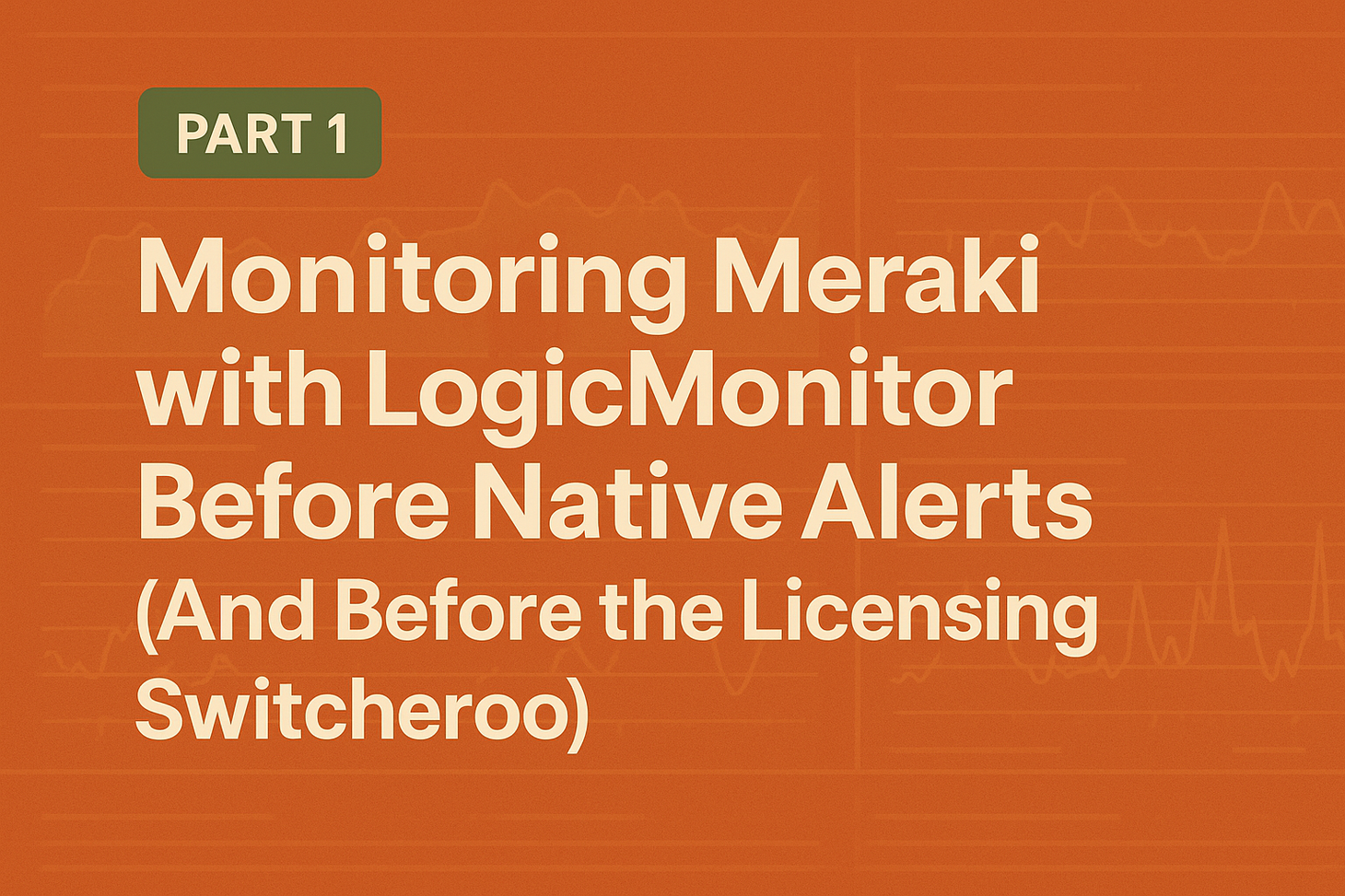Monitoring Meraki with LogicMonitor Before Native Alerts (And Before the Licensing Switcheroo)
Before Meraki had usable alerting, we turned to LogicMonitor. It worked—until the licensing changed from per-network to per-device. For Meraki environments, that meant huge cost increases for monitoring we no longer need.

Before Cisco Meraki rolled out functional built-in alerting, IT teams had to get creative to monitor remote sites, WAN health, and network availability. Like many, we turned to LogicMonitor—a powerful observability platform that, in hindsight, was a bit too powerful for Meraki’s simplicity.
At the time, Meraki offered little more than SNMP and a read-only API. There were no native alert thresholds, no real-time notifications, and certainly no integrations with common ITSM platforms. And to make it worse, many ITSM platforms didn’t support webhooks, so we had to resort to polling and email parsing to generate tickets and escalate issues.
Despite those limitations, LogicMonitor worked. We used synthetic ping checks, custom bandwidth monitoring, and uptime alerts to fill in the gaps. The dashboards, while visually dense, gave us the data we needed to stay ahead of circuit failures—long before Meraki added anything comparable.
Licensing: From Predictable to Punitive
Originally, LogicMonitor licensed Meraki environments on a per-network basis. That made sense. One network, one license. A site with an MX, a few switches, and a couple APs counted as one device. Clean, simple, and scalable.
Then came the shift: LogicMonitor changed its licensing to a per-device model.
For Meraki-heavy environments, this was a massive cost increase. A single site that once counted as one device could suddenly be five, six, or even more depending on how many physical components were in play.
Take an enterprise with 300 sites: under the old model, that’s 300 licensed devices. Under the new one? Easily 1,500–2,000.
At ~$15 per device per month (even after discounts), that’s a jump from $4,500/month to potentially $30,000/month—a difference of over $300,000 per year for the same insights.
What stings even more? During the sales process, we were explicitly told LogicMonitor wouldn’t move to a per-device model. Yet here we are.
A Telescope for a Dashboard
There’s no denying LogicMonitor is a powerful tool. But for Meraki networks? It’s overkill. Meraki’s own dashboard provides intuitive graphs for interface utilization, latency, packet loss, and historical traffic trends. And now, with functional alerting and API improvements, much of what we once relied on LogicMonitor for is natively available—without extra complexity or cost.
Most NOCs aren’t just sitting around watching graphs all day—they rely on actionable alerts, automated escalations, and integrated workflows to stay ahead of outages. When the monitoring platform becomes heavier than the network itself, something’s off.
Even Highlight, with its much more affordable licensing model, offers visualizations that may be better suited to Meraki environments. But again—what NOC is staring at dashboards all day? Visibility is important, but automation and alert fidelity matter more.
TL;DR:
Before Meraki alerts existed, LogicMonitor was the go-to workaround—even if our ITSM didn’t support webhooks. It worked well. But with the shift to per-device licensing and Meraki’s native improvements, it’s hard to justify the cost or complexity anymore. Most NOCs need smarter alerting—not prettier graphs.
➡️ Coming soon: A look at how AIOps isn’t just marketing anymore—and how platforms like Panoramic Data’s Magic Suite make it an efficiency play by letting you turn your Tier 1 knowledge base into bots that automate responses, enrich alerts, and drive real operational gains.
Jonathan Ford Newsletter
Join the newsletter to receive the latest updates in your inbox.
